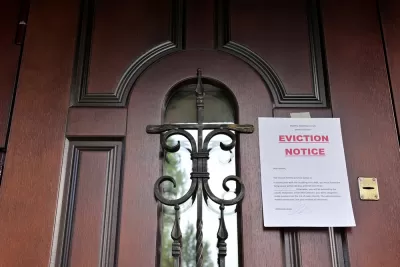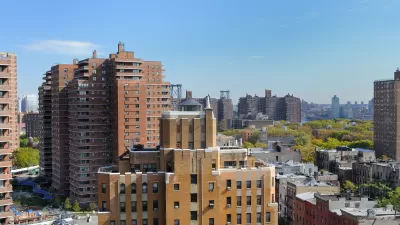Eviction rates are rising as rents and inflation grow around the country and households struggle to keep up with rent payments.

With federal assistance programs drying up and rents continuing to rise in most U.S. cities, more households are facing eviction, reports Shannon Pettypiece for NBC News. “Eviction filings have been on the rise and were above their historical averages in half of the 1,059 counties tracked by Legal Services Corp., a federally-funded legal aid group, during either August or September.”
Experts worry that the wave of evictions expected after pandemic relief ends is about to crest as inflation soars and the country faces an acute housing shortage. “Despite a relatively strong job market and historically low unemployment, nearly 7.8 million Americans said they were behind on their rent in October and 3 million felt they were likely to be evicted in the next two months, according to a census survey the same month.”
Rents nationwide went up by 9 percent in September, with some cities, such as Phoenix, experiencing rent hikes of as much as 24 percent year over year. “With the emergency rental assistance funds running low, the Biden administration is urging states and cities to use other sources of funding, including the remaining money from the Covid stimulus bill passed last year, to continue providing support to renters or to put other protection policies in place, said Gene Sperling, the White House’s coordinator for American Rescue Plan funds.”
FULL STORY: Evictions are piling up across the U.S. as Covid-era protections end and rents climb

Alabama: Trump Terminates Settlements for Black Communities Harmed By Raw Sewage
Trump deemed the landmark civil rights agreement “illegal DEI and environmental justice policy.”

Planetizen Federal Action Tracker
A weekly monitor of how Trump’s orders and actions are impacting planners and planning in America.

The 120 Year Old Tiny Home Villages That Sheltered San Francisco’s Earthquake Refugees
More than a century ago, San Francisco mobilized to house thousands of residents displaced by the 1906 earthquake. Could their strategy offer a model for the present?

USDOT Repeals Emissions Monitoring Rule
A Biden-era regulation required states to report and plan to reduce transportation-related emissions.

CaBi Breaks Ridership Record — Again
Washington D.C.’s bike share system is extremely popular with both residents and visitors.

San Francisco Opens Park on Former Great Highway
The Sunset Dunes park’s grand opening attracted both fans and detractors.
Urban Design for Planners 1: Software Tools
This six-course series explores essential urban design concepts using open source software and equips planners with the tools they need to participate fully in the urban design process.
Planning for Universal Design
Learn the tools for implementing Universal Design in planning regulations.
Clanton & Associates, Inc.
Jessamine County Fiscal Court
Institute for Housing and Urban Development Studies (IHS)
City of Grandview
Harvard GSD Executive Education
Toledo-Lucas County Plan Commissions
Salt Lake City
NYU Wagner Graduate School of Public Service





























